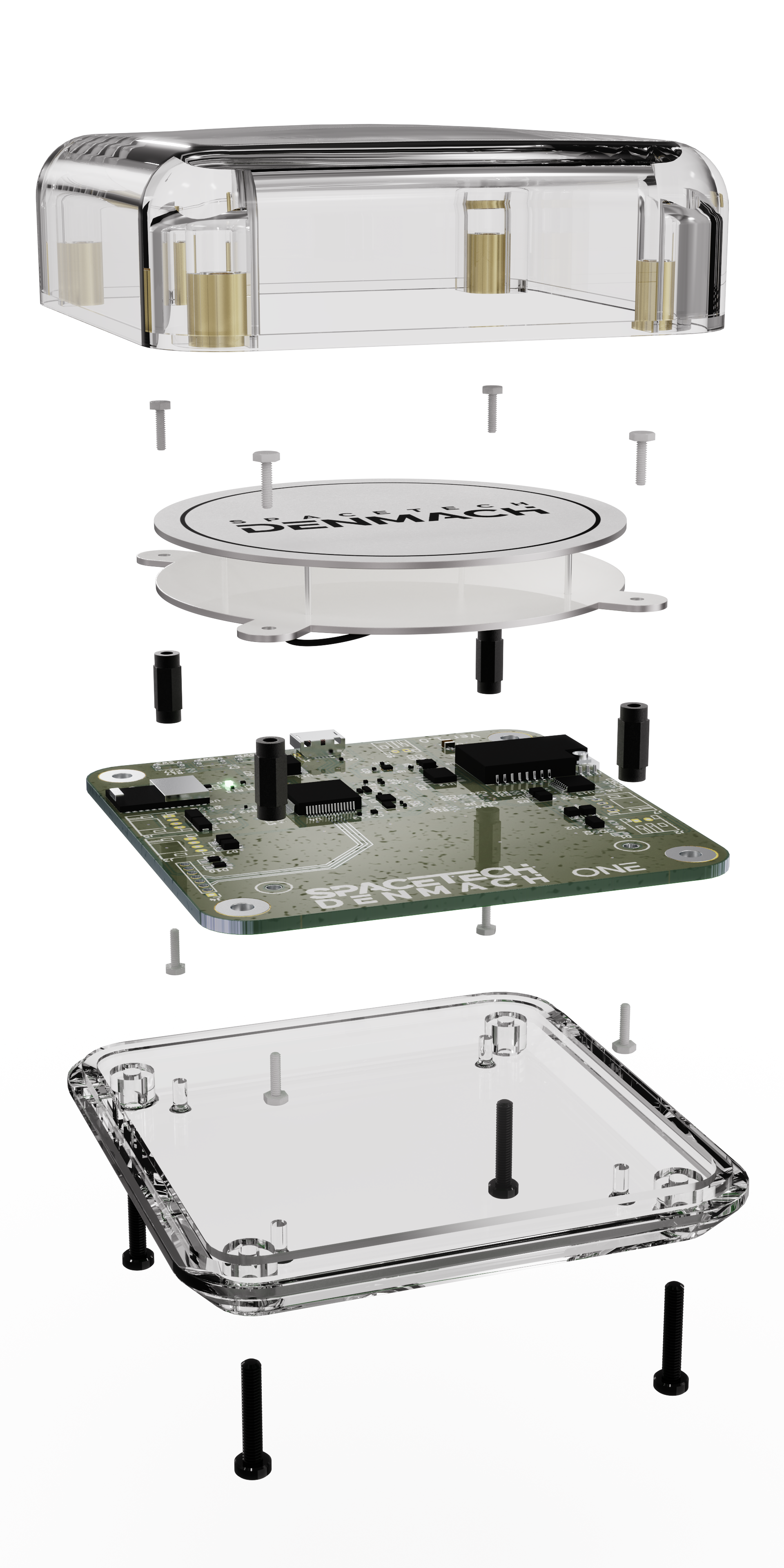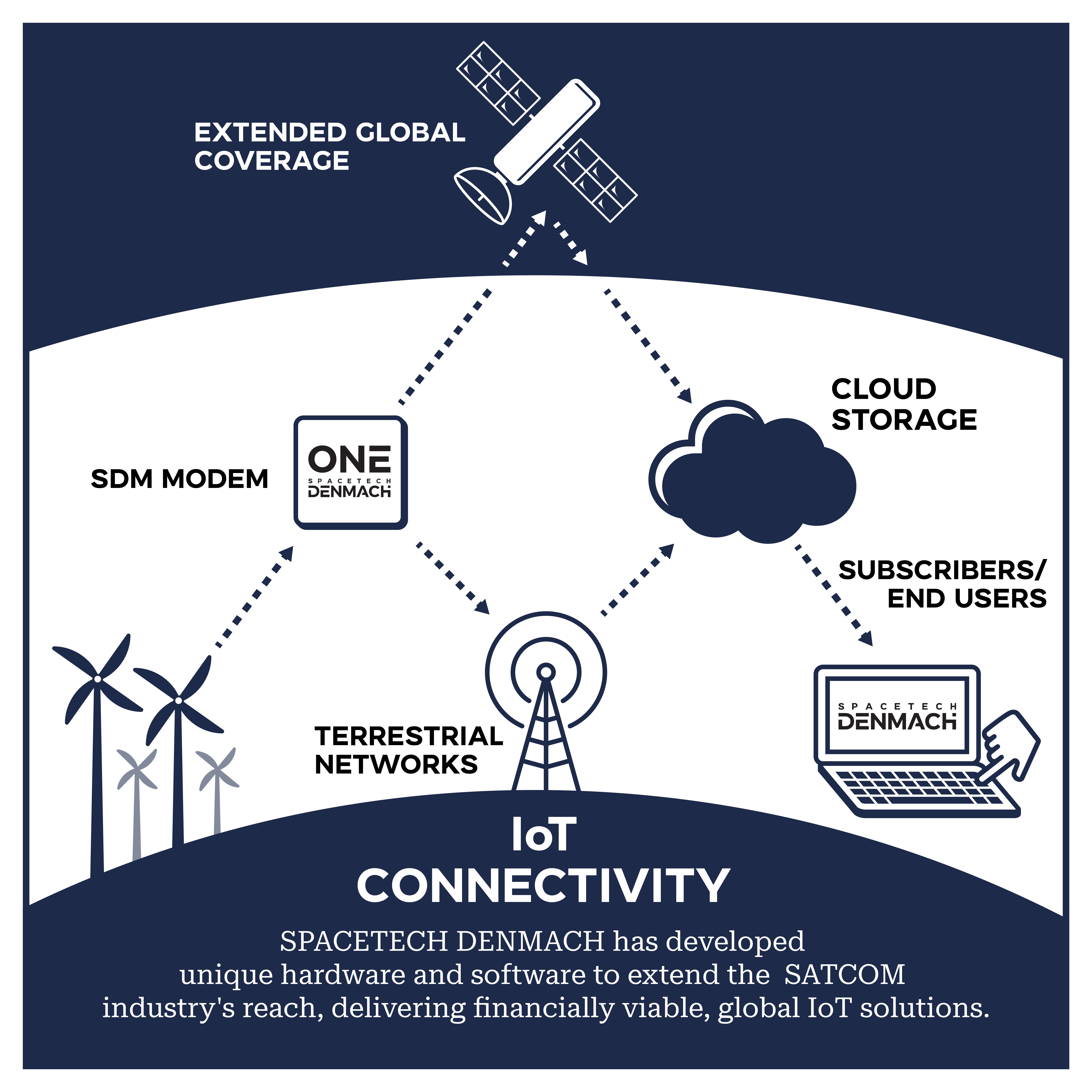
-
StatusOngoing
-
Status date2023-07-17
-
Activity Code7B.071
By 2025 there will be over 41 billion IoT devices worldwide, according to the World Economic Forum. The demand for Satellite Communication (SATCOM) to transfer Internet of Things (IoT) data to support the growing economy is on a vertical trajectory, but we need a skilled workforce to service and interpret it. The future of renewable energy, sustainable supply chains, SMART farming or climate protection, will depend upon our capabilities with all things data.
Students in today’s classrooms will be the ones to embrace the 4th industrial revolution (4IR). To ensure Europe can provide enough manpower to meet this demand, we must ignite a passion for digital innovation in school.
SpaceTech denMACH has developed a first to market educational solution to meet this need.
The denMACH ONE is an IoT / SATCOM modem with integrated sensors such as temperature, humidity, air pressure, CO2, GPS and more. The extracted data is then transmitted via a low-earth orbit satellite to classrooms. The aim is to make the latest SATCOM technology available in the classroom.
The goal of this ARTES activity is to design and build a bespoke educational SATCOM /IoT solution, giving students a real hands-on learning experience in sourcing, processing, and transporting IoT data via SATCOM based on real world use-cases, exciting the IoT and SATCOM experts of the future.
Worldwide, school curriculums tend to be more than 10 years behind technology and IoT and Artificial Intelligence (AI) are no exception.
We can compare IoT/SATCOM with robotics and digitalisation over the last 20 years, where many countries found themselves under pressure to bring technology to the classrooms. Teachers were nervous of providing valuable lesson material in subjects they themselves had no expertise in
For teachers to feel confident in introducing new technology to the classrooms they need to believe in a robust structure of curriculum relevant lesson material, teacher guides, easy-to-use interfaces, technical support and clear educational value.
Currently, most natural sciences subjects (maths, science, etc) expect students to practice prediction, collection, analysis and comparison of data, learning to inform long-term decisions. Students must be able to work with data and understand the relevance of big data used in industry, academic and vocational careers.
Both space and technological innovation, as well as the critical need to optimize and protect our world’s natural resources are relevant to curriculum expectations and exciting to students, increasing motivation to learn.
No other solution is currently available to teach hands-on IoT and SATCOM subject matter and how data is becoming more relevant and crucial to our planet’s wellbeing. The only alternative options are to have a teacher with the expertise and resources to create their own modem unit, or to rely entirely on textbooks or secondary sources.
However, most teachers wish to use real world data and the chance to implement this through actual industrial hardware, sensors and use cases is an optimal introduction to how these skills contribute to future careers.
SpaceTech denMACH has developed the denMACH ONE modem – a standalone IoT unit capable of satellite and terrestrial connectivity, making IoT data globally accessible to all via satellite communication.
With inbuilt sensors (including temperature, humidity, air pressure, CO2, vibration, GPS) the unit can also connect to existing 3rd party sensors to optimize their data transfer, or have customized sensors built in to meet customer needs.
When a satellite pass is in transit, the modem automatically sends the processed data from the sensors, while minimising the power needed to transmit the small data packages. The unit is extremely energy efficient, powered only by 2 AA-type batteries lasting over a 5-year lifespan.
At only 95.5mm in width and length and weighing 244 grams, the unit can comfortably fit in a range of locations from wind turbine blades, inside container ship units through to being attached to animal tracking units.
Using one or multiple satellites in polar orbit, the signal reception is truly global. The data is then transmitted back to ground stations and stored in the cloud – to be accessed from wherever needed.
|
The Ground Segment system consists of the hardware, primarily the IoT device, with an array of sensors and satellite communication capability, allowing students to collect data remotely and send it via an Earth orbiting satellite to a ground station and to the cloud for analysis. The hardware solution can function as a stand-alone device, as well as integrate into existing educational tools, such as Makeblock or Micro:bit. The intention is to be compatible with the scratch code programming languages used by these educational systems. Otherwise the device is controlled by the host software, developed specifically for this education. The host software sets up the device and handles data. The hardware and software modules are complemented by the educational material, which forms a foundation for teachers to build their lessons, depending on the educational sets they have available. |
 |
 |
|
March 2023: Introduction of the unit to education distributors throughout Europe to ascertain market interest
March to June 2023: Lesson and teacher guides development
June to August 2023: Prototype testing in schools
August 2023: Huginn mission on the ISS, with data collection and lesson activities completed in space and replicated in classrooms in Denmark
September 2023: first units available for schools participating in the project
February 2024: first data to be sent from the ISS, distributed to classrooms throughout Denmark
Sept 2024: projected launch to schools as standalone unit
The development of the core modem is complete, with testing ongoing across various scenarios. The first run of the test unit production is accomplished and first units delivered to industry partners, followed by preliminary testing in schools.
Teaching material is in development with lesson activities to be implemented by students as part of the ISS project, and schools are being recruited to join the mission.
Educational material for teaching outside the ISS project is being aligned with the curriculum for a targeted introduction across Europe by September 2024.


